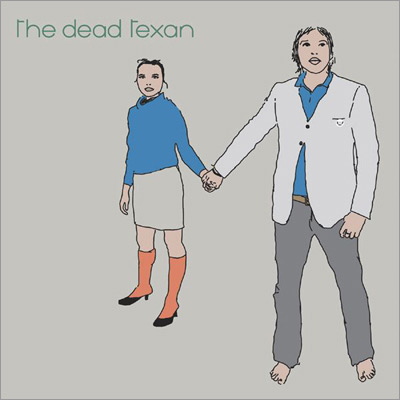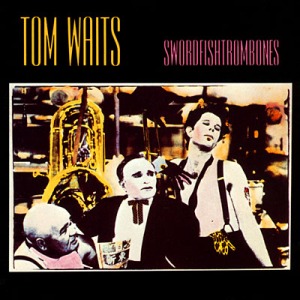|
How great are Amazon wish lists? I no longer have to feel guilty about having relatively esoteric tastes when it comes to gift-receiving, since the givers, in this case my in-laws (thanks!), don’t have to track down some hard-to-find LPs. There are limits to what you can find on Amazon, of course, but I enjoy hunting the out-of-print albums, so in-print albums or recent reissues make a nice foundation.
124. The Dead Texan – The Dead Texan CD+DVD – Kranky, 2004

I just finished writing my entry for The Dead Texan for my decade-end album list (spoiler alert!), which means three things: first, I enjoy the album a great deal; owning it was long-overdue; and it’ll be difficult to write about the album without rehashing everything I just wrote. Instead I’ll focus on an aspect of this release that I failed to mention in that blurb: the accompanying DVD. Consisting of seven videos done by Christina Vantzos and Adam Wiltzie, the video portion is very pleasant, if not as memorable or affecting as the music, although I suspect that wasn’t the aim. The repeated motifs, casual animation, and vivid colors are more of a jumping-off point for your own imagination. If only MTV had a late-night show like 120 Minutes/Subterranean for ambient music, but that seems rather unlikely. You can watch a number of these videos on YouTube, including “Aegina Airlines,” “The Six Million Dollar Sandwich,” and personal favorite “The Struggle,” although none of them quite match up to this fan-made clip of Stars of the Lid’s “Requiem for Dying Mothers, Part 1” starring Alf.
125. Tom Waits – Swordfishtrombones LP – Island, 1983

I own three albums from earlier in Tom Waits’ career (Closing Time, Nighthawks at the Diner, and Foreign Affairs) and I’ve heard a few of his later junkyard-percussion and gravel-voiced albums (Rain Dogs and Mule Variations), but I hadn’t ventured into a commitment with any of them for a very specific reason: I know when I should listen to Tom Waits, but I’m never in that situation. Here’s the ideal situation for putting Tom Waits on my turntable: it’s 3am, I don’t know what day it is, I live in a musty apartment above a bar in run-town part of town, and I am drinking whiskey. Oh, and I’m heartbroken, but it’s been a while since the break-up, so it’s a more general sense of heartbreak. That’s the perfect storm for Tom Waits, as I imagined it, and the odds of it ever happening for me are about one in eight million. Yet Waits seems so perfect for that mood that I’ve struggled to find a replacement setting.
This morning I gave up trying to match Waits to the proper mood and put my newly acquired copy of Swordfishtrombones on the turntable. It’s 11am on a Saturday morning in December. I’m wrapping presents for my wife and watching USPS trucks swarm the neighborhood. It’s a far cry from the parade of misfits Waits invokes, but these songs still manage to set their moods. I expected a greater emphasis on the clanging, junkyard songs, but what impressed me so much about Swordfishtrombones on my first listen was the variation. The instrumentation, the production values, the moods, the vocal styles—the album switches character from song to song, yet still holds together. This feeling sunk in when “Town with No Cheer” and “In the Neighborhood” closed out side A. Those songs are closer in spirit to his earlier recordings, but the mix, the lyrics, and the delivery all separate them.
What hasn’t sunk in yet is the content of the songs. There’s no lyric sheet included with this reissue of Swordfishtrombones—I don’t know if there ever was one—and a few of Waits’ more dramatic vocal inflections prevent easy transcription of his words. The recourse for this issue may be David Smay’s 33 1/3 book on the album, which I’ve added to my to-buy list, but until then, I’ll give Swordfishtrombones a few more listens to iron out the details. I’ve long respected Tom Waits for being such a profoundly original artist, but Swordfishtrombones marks the first time that my respect wasn’t accompanied by an equal level of distance.
126. The Feelies – Crazy Rhythms LP – Bar None, 1980 [Reissue]

I’ve listened to Crazy Rhythms a few times over the years, most recently in conjunction with my post about its 1986 follow-up, The Good Earth, but it’s never fully sunk in. I understand the appeal of the record—it’s an inspired blend of post-punk, new wave, and the nascent strains of college rock—but transitioning that recognition into genuine fondness has been tricky. Here’s my theory: I’ve encountered all of their typical elements too many times outside of the context of this specific band to be surprised by them. Mid-fi production values, hyper-strummed clean guitars, casually melodic vocals that occasionally skip toward an impassioned yelp, a live-sounding drum kit; all of these elements have filtered down into later indie rock bands as building blocks of the sound, particularly in the 1980s but also (more selectively) in the 1990s and 2000s, so their combination here sounds too familiar. The Good Earth sounds more stereotypically college rock, in part because that sound officially existed by the time of its release, in part because the group’s rhythm section had changed and was less idiosyncratic. Yet that record doesn’t carry the same acclaim as Crazy Rhythms, an album I could no longer ignore now that there’s a nice vinyl reissue out.
Scott at Pretty Goes with Pretty also recently picked this album up, having noted its countless references in Dean Wareham’s Black Postcards memoir, which I’d also read late this summer. He primarily discusses the Feelies’ peers in the 1970s, namely Talking Heads and Devo, both of which make sense as points of comparison, but the key word he uses in relation to Crazy Rhythms is “hypnotic.” That’s the quality that’s stuck out to me as I keep flipping the slab of vinyl over. The rhythm section is both jittery and insistent, the fast-strummed guitars sound like 33rpm parts played at 45rpm, and Glenn Mercer’s vocals often chant lyrics fast enough to sound like an incantation. It’s a recipe for a rapidly vibrating hypnotic disk. The other point that Scott made that clicked with me is that it takes a few listens for songs to differentiate themselves from the whole, likely because of the hypnotic quality I just described. Yet after a few listens, I’m itching to hear specific songs again (“Loveless Love,” “Moscow Nights,” “Raised Eyebrows”). Perhaps Crazy Rhythms was a grower all along, but my advice would be to give it a few extra spins before passing judgment.
|

